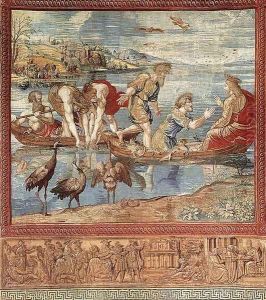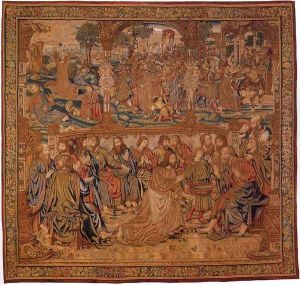Pieter van Edingen van Aelst Paintings
Pieter Coecke van Aelst, also known as Pieter van Edingen, was a Flemish painter, sculptor, architect, and designer of woodcuts, tapestries, and stained glass. Born in Aelst (now Aalst), Belgium, in 1502, he was one of the most influential Northern Renaissance artists of his time. Though the specifics of his early life and training are not well-documented, it is believed that he may have been a student of Bernard van Orley, a leading Brussels artist of the period.
Van Aelst traveled to Italy early in his career, which was a common practice among Northern artists of the period who wished to study Italian art and architecture first-hand. His time in Italy had a significant impact on his work, as he incorporated elements of the Italian Renaissance into his own style. Upon returning to Flanders, he established a workshop in Antwerp, which became a central point for the production of tapestries based on his designs. His works were characterized by their sophisticated composition, clear narrative, and vivid detail.
He married twice, and his second wife, Mayken Verhulst, was also an accomplished artist. His stepdaughter, Mayken Coecke, became a painter as well. Among his most notable pupils was his son-in-law, Pieter Bruegel the Elder, who married van Aelst's daughter Maria Coecke van Aelst.
Coecke van Aelst's influence extended beyond his own immediate circle. He was also a highly regarded designer of tapestries, an art form that was at its peak during his lifetime. His designs were woven in some of the most prestigious workshops in Flanders and were sought after by the nobility and royalty across Europe. In addition to his work in visual arts, he published several translations of architectural treatises, which contributed to the spread of Renaissance ideas in Northern Europe.
Pieter Coecke van Aelst died on December 6, 1550, in Brussels. His legacy lived on through his works, his influence on other artists, and his contribution to the dissemination of Renaissance aesthetics in the Netherlands. Today, his works can be found in major museums around the world, attesting to his lasting impact on the history of art.

